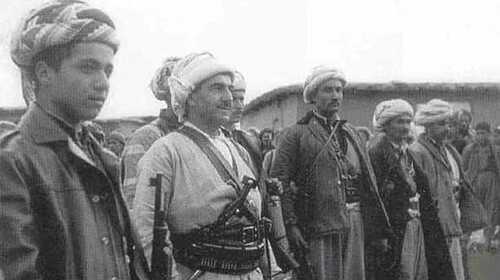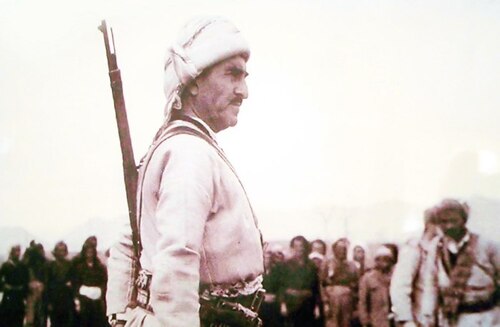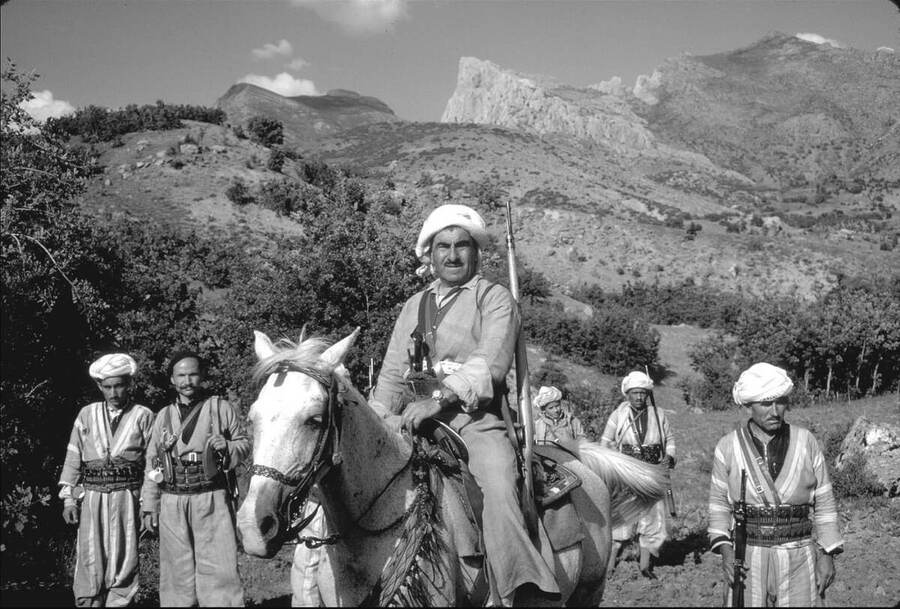There were 15 articles in the March 11 agreement that was signed between the central government of Iraq and the Democratic Party of Kurdistan. This agreement would guarantee most of the rights and requests of the Kurdish people in the South part of Kurdistan but the debatable points on the borders of the autonomic Kurdistan and Baghdad's ignorance on applying those points created another crisis for the South part of Kurdistan.
The 14th article on March 11, 1970 agreement was about ending the struggles over Kirkuk and establishing Kirkuk and the other disputed areas' fate as follows:
After the announcement of this statement, in consultation with the High Supervisory and Executive Council and according to the official census to be implemented, the necessary efforts should be made for the unity of the provinces and administrative areas that are mostly Kurdish. Meanwhile, the state continues its attempts to help these areas develop comprehensively and implement the Kurdish nation's right to self-determination in Kurdistan. As long as the administrative union is formed, the national affairs of Kurdistan will be governed through the sessions of the High Council and governors of the northern regions. Since autonomy is within the framework of the Republic of Iraq, the right to extract and use the natural resources of these regions is under the control of this Republic.
The Ba'ath government revealed its true intention a few months after March 11 agreement. One of which was their plan to interfere with the census of Kirkuk and the surrounding areas of that city because it had announced earlier that 85% of the population in this area are Kurdish citizens.

Tensions over Kirkuk and postponing the census process created a dilemma over the agreement. The Ba'ath regime did not wish to lose Kirkuk's wealthy properties thus, they began to send Arab citizens to live in this city and the areas around it.
The Iraqi government published the "Kurdistan self-determination law" on March 11, 1974, without the participation of the Democratic Party of Kurdistan. One day later, the political office of the Democratic Party of Kurdistan announced a statement to indicate their position on the autonomic regions which ended in revealing the debatable points. One of the most important points was to determine the borders of the autonomic regions and the fate of Kirkuk and change it into an Arabic city.
The Ba'ath regime of Iraq attempted to assassin Mullah Mustafa Barzani several times in the 1970s. Their goal in assassinating Mullah Mustafa Barzani was to give the Kurds their preferred autonomy and easily make Kurdistan's oil fields an Arab territory. During the 70s, the most significant tension between Mullah Mustafa and the Ba'ath regime was the government's efforts to change the oil fields of Kurdistan into Arabic cities.
Mullah Mustafa Barzani presented these suggestions to the central government of Iraq on March 10, 1974, in order to find a solution for the Kirkuk issue:
1. Kirkuk must stay stable as before with a combined system that is under the autonomic region's control.
2. Kirkuk Province should be divided into two parts: Hawija and Qaratapa can be under the central government's control, Kirkuk City, and the other areas around it should be under the autonomic state's control.
Of course, these proposals were rejected by the central government, and the agreements ended.

In March 1974, the Iraqi Revolutionary Command Council passed the law of building the autonomic Kurdistan while Hawler (Erbil) was supposed to be the capital city of it and they made some changes in the law which resulted in excluding the oil fields from Kurdistan borders. In the end, the Democratic Party of Kurdistan resisted this law and once again the war began.
Obviously, the most important reason for the failure of the March 1970 agreement between Baghdad and the Democratic Party of Kurdistan under Mullah Mustafa Barzani's command was undoubtedly the issue of determining the borders of the autonomic Kurdistan regions which did not include Kirkuk Province. This led to the failure of the agreements and the beginning of the war.
After the failure of the agreement, the Iraqi army attacked Kurdistan with 120 thousand soldiers, 700 to 800 tanks (Iraq possessed 900 tanks at that time), 20 artillery battalions, all their air forces (11 thousand forces), and 20 thousand police officers. Only 50 thousand Peshmergas were resisting these huge armed forces.
Mullah Mustafa Barzani and his allies continued the war with the Iraqi army hoping that Iran and the U.S. would support them. Although the Kurdish forces were successful in the war against Baghdad the Iraqi army could capture some of the Kurdistan cities such as Zakho during the 1974 summer.

At the beginning of 1975, the war reached a stage that Iraq could not win without cutting Iran's support for the Kurdish forces.
In February 1975, Iraq gave a positive signal to the Arabic countries that it wants to solve its struggles with Iran peacefully. On March 6, 1975, Muhammad Reza Shah of Iran and Saddam Hossein, Iraq's Deputy President, met in Aljazeera and signed an agreement to end the enmity between the two countries. This agreement resulted in Iran's refusal to support the Kurdish forces in the South part of Kurdistan.
The Aljazeera agreement had a destructive impact on the armed revolution of Kurdish people in the South part of Kurdistan and it made this movement end for a while. However, the Democratic Party of Kurdistan and the Kurdish citizens in the South part of Kurdistan never stopped their revolution and attempts. Years later this revolution and attempts succeeded to gain some of their goals and the revolution to gain the ultimate goal which is Kurdistan’s full autonomy is still going on.








